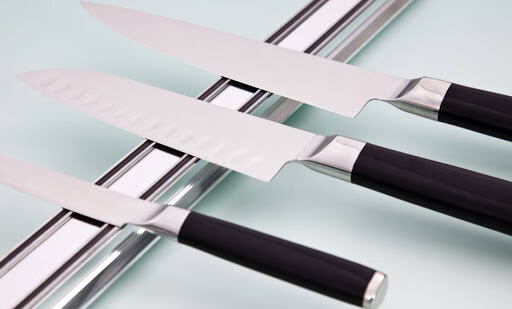An important component of the cooking process is the tools you use in your kitchen. In particular, your knives see a lot of use. You use them to cut meat, cut vegetables, and cut your food into pieces while sitting down to dine. If you see your ingredients tear before you can slice them entirely, your knife may be too dull. Over time, your knives’ blades become painful with continuous usage and need honing. Learning how to maintain a sharp knife involves a little practice but does not take too long. Below are key tips to keep your knife’s edge sharp.
Table of Contents
Sharpening
Maintaining the blades sharp with regular sharpening improves the ability to cut and reduces harm. A weak knife is difficult to use, needs more cutting force, and does not give optimal results. Most knife blades are on each side of the cutting edge at a 20-degree angle to balance sharpness and longevity. Sharpen knives at a 15-degree angle on either side for meals with softer components. Bear in mind that the narrower the angle of a blade is, the more frequently it must be sharpened.
Besides, you can opt for a reliable knife sharpening company to get professional knife sharpening, consistent quality, and reliable service for your restaurant demands.
Honing Rod
You may have come with a barrel if you have purchased a set of kitchen knives. A honing rod, also known as sharpening steel, is a long, metal-like object nearly like a short sword. It helps to rearrange the metal on your knife without removing a lot of metal from the blade.
You need to hold the knife in the dominant hand and the rod in the non-dominant hand to utilize this rod. Uplift the tip of the rod over your handle. Keep your fingers away from the knife and hold the blade concerning the rod at a 20-degree angle. Glide the knife from the knife’s heel to its tip across the top of the rod.
Repeat on the other side of the knife blade on the bottom of the pole. A crossing up and down is called a revolution. Before using your knife, you should make six to eight revolutions. Go gently at first till the motion falls. The sooner you practice, the faster you get.
Be Sure to Cut the Right Surface
The surfaces you select to use for cutting affect the state of your blades immediately. Hard or metal surfaces like stainless steel, granite, and aluminium must be avoided. On the other hand, it’s usually fine to cut wood, plastic, or polyethylene. You may be safe as long as you use a cutting board constructed from the right materials.
Likewise, you’d not use a cleaver to peel the skin off an apple; you’d want to use a paring knife. By inappropriately or for the wrong purposes, you could damage the overall structure of the knife by using a knife (including using your knife as a screwdriver or opener).
Store Your Knife Properly
Create your knives’ designated storage space. When not in use, make sure they don’t lie on working surfaces. Avoid storing loose knives in drawers, as this is not safe for kitchen workers and could damage the blade.
Magnet knives or blocks to protect the blades from contaminants and accidents should be stored on a magnetic holder. Choose a knife bag or case for a more portable option to store the knives safely when not in use.
Check: Binance Lido Quiz Answers CoinTips
Maintenance
It is crucial to clean blades immediately for the following use to prevent infection. The kitchen is small and might cause damage if unclean knives are left in working areas or sinks. Clean knives tend to perform better. Knives on the handle or blade with food residue may become slippery during usage. For safety and efficiency, a safe grip is required. Please remember to utilize a cutting board or chopping block always for optimal results.
Hand Wash Them
Without a second thought, most people throw their dirty knives in the dishwasher. Although this might seem like a terrific way to cleanse your knives correctly, your blades are swiftly dulled by the heat, water, and detergent. Take the time to wash your knives completely by hand. Although it is a good habit before every usage to sharpen your knives, washing them by hand should help them maintain a sharper edge for longer durations.
Now that you have some tips on knife care, maintenance, and sharpening, browse through your knife collection and select the knives you believe are necessary. If you do not sharpen your knives, we recommend you choose a restaurant knife sharpening company that is reliable and trustworthy.

